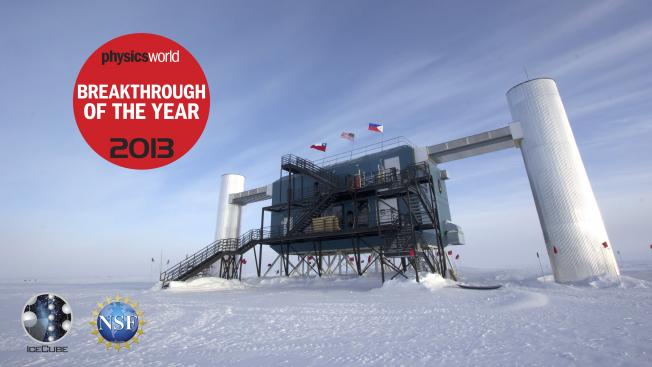The IceCube Neutrino Observatory - Contributions to ICRC 2017 Part VI: IceCube-Gen2, the next generation neutrino observatory
Abstract:
Contents:
1 IceCube-Gen2: the next-generation neutrino observatory for the South Pole
2 IceAct: Imaging Air Cherenkov Telescopes with SiPMs at the South Pole for IceCube-Gen2
3 Overview and performance of the D-Egg optical sensor for IceCube-Gen2
4 Muon track reconstruction and veto performance with D-Egg sensor for IceCube-Gen2
5 In-ice self-veto techniques for IceCube-Gen2
6 A camera system for IceCube-Gen21
7 The mDOM – A multi-PMT Digital Optical Module for the IceCube-Gen2 neutrino telescope
8 The IceTop Scintillator Upgrade
9 Overview and Performance of the Wavelength-shifting Optical Module (WOM)
10 The Precision Optical CAlibration Module for IceCube-Gen2: First Prototype
The IceCube Neutrino Observatory: Contributions to ICRC 2017 Part V: Solar flares, supernovae, event reconstruction, education & outreach
Abstract:
Contents:
1 Search for GeV neutrinos associated with solar flares with IceCube
2 Estimating the Sensitivity of IceCube to Signatures of Axion Production in a Galactic Supernova
3 Searching for Arbitrary Low-Energy Neutrino Transients with IceCube
4 Deep Learning in Physics exemplified by the Reconstruction of Muon-Neutrino Events in IceCube
5 Connecting Beyond the Research Community: IceCube Education, Outreach, and Communication Efforts
The IceCube Neutrino Observatory - Contributions to ICRC 2017 Part IV: Searches for Beyond the Standard Model Physics
Abstract:
Papers on searches for beyond the standard model physics, submitted to the 35th International Cosmic Ray Conference (ICRC 2017, Busan, South Korea) by the IceCube Collaboration
Contents:
1 - Delayed light emission to distinguish astrophysical neutrino flavors in IceCube
2 - Search for Signatures of Heavy Decaying Dark Matter with IceCube
3 - Latest results and sensitivities for solar dark matter searches with IceCube
4 - Searches for annihilating dark matter in the Milky Way halo with IceCube
5 - Searches for Dark Matter in the center of the Earth with the IceCube detector
6 - Measurement of water luminescence – a new detection method for neutrino telescopes
7 - Combined Search for Neutrinos from Dark Matter Annihilation in the Galactic Center using IceCube and ANTARES
The IceCube Neutrino Observatory - Contributions to ICRC 2017 Part III: Cosmic Rays
The IceCube Neutrino Observatory - Contributions to ICRC 2017 Part II: Properties of the Atmospheric and Astrophysical Neutrino Flux
Abstract:
Papers on the properties of the atmospheric and astrophysical neutrino flux submitted to the 35th International Cosmic Ray Conference (ICRC 2017, Busan, South Korea) by the IceCube Collaboration
Contents:
1 - Search for Astrophysical Tau Neutrinos in Six Years of High-Energy Starting Events in IceCube
2 - Multi-flavour PeV neutrino search with IceCube
3 - High Energy Astrophysical Neutrino Flux Measurement Using Neutrinoinduced Cascades Observed in 4 Years of IceCube Data
4 - A Measurement of the Diffuse Astrophysical Muon Neutrino Flux Using Eight Years of IceCube Data
5 - Characterizing the Flux of Atmospheric Neutrinos with IceCube-DeepCore
6 - Measurement of High Energy Neutrino – Nucleon Cross Section and Astrophysical Neutrino Flux Anisotropy Study of Cascade Channel with IceCube
7 - Observation of Astrophysical Neutrinos in Six Years of IceCube Data
8 - All-flavor Multi-Channel Analysis of the Astrophysical Neutrino Spectrum with IceCube
9 - Differential limit on an EHE neutrino flux component in the presence of astrophysical background from nine years of IceCube data
10 - Improving Future High-Energy Tau Neutrino Searches in IceCube
11 - Search for Astrophysical Tau Neutrinos with the IceCube Waveforms



